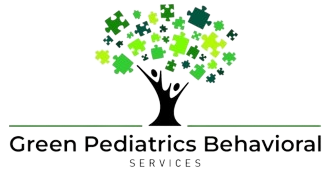
Applied Behavior Analysis (ABA) therapy is a widely recognized and effective treatment for individuals with autism and other developmental disorders. Traditionally, ABA therapy has been provided in clinical settings or at home. However, there is growing interest in integrating ABA therapy into school environments. This approach can significantly improve learning opportunities and improve outcomes for students with special needs. But can ABA therapy be done at school? The answer is a resounding yes, and it comes with numerous benefits.
In this blog, we will look into the benefits of ABA Therapy in Schools.
Understanding ABA Therapy
ABA therapy is a scientific approach that uses techniques and principles to bring about meaningful and positive changes in behavior. It involves understanding how behavior works, how it is affected by the environment, and how learning takes place. The primary goal of ABA is to increase behaviors that are helpful and decrease behaviors that are harmful or interfere with learning.
Key Components of ABA Therapy
- Discrete Trial Training (DTT): A structured method of teaching that breaks down skills into small, “discrete” steps.
- Natural Environment Teaching (NET): Using the child’s natural environment to teach skills in a more relaxed and informal setting.
- Pivotal Response Training (PRT): Focusing on pivotal areas of a child’s development, such as motivation and response to multiple cues.
- Behavioral Interventions: Strategies to reduce problem behaviors and teach new skills.
Can ABA Therapy Be Done at School?
Absolutely. Implementing ABA therapy in schools is not only feasible but also highly beneficial. Schools provide a natural and inclusive environment where children spend a significant part of their day. Integrating ABA therapy into this setting can help generalize skills across different environments and promote social interaction with peers.
Benefits of ABA Therapy in Schools
Here are some common benefits of ABA therapy in schools:
1. Consistency Across Environments
One of the main advantages of providing ABA therapy in schools is the consistency it offers. Children can receive consistent behavioral interventions throughout their day and can reinforce the skills they learn at home or in clinical settings. This consistency is crucial for the generalization and maintenance of new behaviors.
2. Enhanced Social Skills
Schools provide a social environment where children can interact with their peers. ABA therapy in this setting can target social skills, helping children learn how to communicate, share, take turns, and build relationships. These social interactions are essential for overall development and can significantly enhance a child’s quality of life.
3. Improved Academic Performance
ABA techniques can be used to support academic learning. By breaking down tasks into manageable steps, providing clear instructions, and using positive reinforcement, ABA therapy can help children with special needs succeed in their academic pursuits. This custom approach can lead to improved focus, better task completion, and higher academic achievement.
4. Behavior Management
Schools often face challenges with behavior management, especially for students with special needs. ABA therapy provides effective strategies to address challenging behaviors, reducing disruptions in the classroom and creating a more conducive learning environment for all students.
5. Collaboration and Training for School Staff
Implementing ABA therapy in schools encourages collaboration between therapists and educators. Teachers can receive training in ABA techniques, empowering them with the skills to support their students more effectively. This collaborative approach ensures that all staff members are on the same page, working together to achieve the best outcomes for the child.
Practical Considerations for Implementing ABA Therapy in Schools
1. Individualized Education Plans (IEPs)
For students with special needs, Individualized Education Plans (IEPs) are essential. These plans outline specific goals and interventions customized to the child’s needs. Integrating ABA therapy into the IEP ensures that behavioral strategies are aligned with educational goals, providing a comprehensive approach to the child’s development.
2. Qualified ABA Professionals
It’s crucial to have qualified ABA professionals involved in the school setting. Board Certified Behavior Analysts (BCBAs) can oversee the implementation of ABA therapy, ensuring that interventions are effective and data-driven. They can also provide ongoing training and support to school staff.
3. Parental Involvement
Parental involvement is a key factor in the success of ABA therapy. Schools should encourage regular communication between parents and the school’s ABA team. This collaboration ensures that strategies are consistent across home and school environments, providing the child with the best chance for success.
4. Data Collection and Analysis
ABA therapy relies heavily on data collection to track progress and adjust interventions as needed. Schools should establish strong systems for collecting and analyzing data on student behavior and academic performance. This data-driven approach ensures that interventions are specific to the child’s needs.
Conclusion
Integrating ABA therapy into schools offers a multitude of benefits, from improving social skills and academic performance to providing consistent behavior management strategies. Schools provide a natural environment where children can practice and generalize new skills, making ABA therapy an invaluable component of special education programs.
By addressing the question, “Can ABA therapy be done at school?” we see that not only is it possible, but it also significantly enhances the learning and developmental opportunities for students with special needs. With the right support, training, and collaboration, ABA therapy can help schools create inclusive and effective learning environments for all students.
Looking For ABA Therapy?
Ready to maximize learning opportunities for your students? Consider implementing ABA therapy in your school and witness the positive impact it can have on your educational community.
